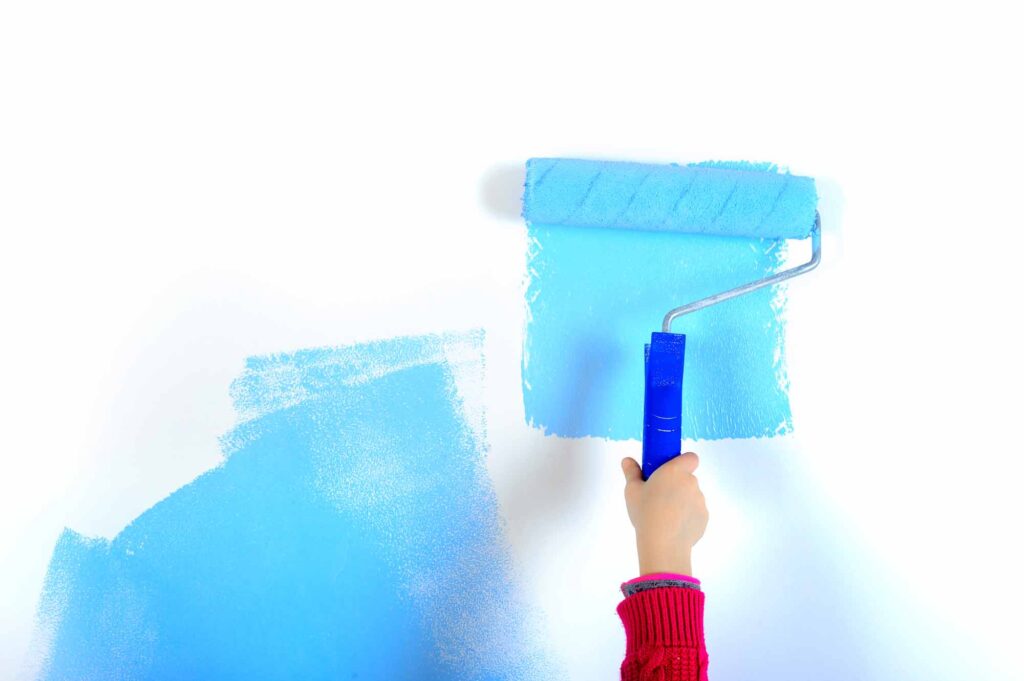If you’ve been following the latest home decor and refurbishment trends, you might have stumbled upon an intriguing question: “Can you stain over paint?” We’ve encountered countless homeowners with the same query at Infinity Painting LLC. Today, we’re diving deep into this topic to quench your curiosity and shed light on the nuances of the process.
The Trending Aesthetic: Stain Over Paint
The appeal of staining over paint lies in its transformative power. This technique highlights the wood’s texture, providing a completely different and often unexpected effect. Depending on the paint’s color, sheen, and stain type, the resulting look might range from a rich, dark undertone to a glazed, lacquered finish. Depending on your desired effect, it gives your furniture or woodwork a hint of vintage or a dash of modernity.
Can You Put Stain Over Paint?
Yes, the world of painting is vast and diverse, and one of the techniques that’s caught the eye of many is staining over painted wood.
We’ve embraced this method with open arms and brushes at Infinity Painting LLC. Imagine the deep richness of stained wood paired with the sheen and hue of underlying paint. The outcome? A luxurious, lacquered finish punctuated by mesmerizing dark undertones. This isn’t merely staining; it’s an art form.
One might notice the presence of streaks, but these are not flaws in our world. They’re intentional, artistic choices that can be tailored—from bold grain-like patterns using coarse brushes to delicate nuances with horse hair brushes or sponges.
When to Stain Over Paint
Choosing the right moment to stain over paint is just as crucial as the technique. While enhancing your painted wood with a rich stain is exciting, timing can be everything. Let’s delve into the ideal circumstances to consider this aesthetic transformation:
1. Desire for Texture and Depth
If your painted surface looks too flat or lacks character, it might be the right time to introduce some depth and texture with a stain. The combination of stain over paint can accentuate the wood’s grain, giving your piece a richer and more nuanced appearance.
2. Revitalizing Old Paint Jobs
Over time, painted surfaces can begin to look worn out or faded. Instead of repainting, staining can breathe new life into your furniture or woodwork, imparting a refreshed appearance.
3. Transitioning Decor Styles
If you’re transitioning from a contemporary to a more rustic or vintage look, staining over existing paint can help bridge that stylistic gap without starting from scratch.
4. Seeking a Protective Layer
Some stains add beauty and provide additional protection against wear and tear. If your painted wood is in an area of high traffic or prone to scratches, considering a protective stain might be apt.
However, remember, while these circumstances might hint it’s time for a stain, it’s essential to ensure professionals undertake the actual staining process. The nuances, as previously discussed, can be tricky. The expertise of a seasoned professional, like those at Infinity Painting LLC, guarantees that your vision translates into a perfect reality.
How to Stain Painted Wood
Staining over painted wood is an art, a delicate balance of preparation, technique, and finish. It’s not just about achieving that ideal shade or hue but also ensuring the longevity and durability of the stained surface. Here’s a brief overview of the process to give you an idea of the intricacy involved:
- Surface Assessment: Before diving into staining, it’s essential to assess the condition of the painted surface. The type of paint, its sheen, and the overall state of the wood play a significant role in determining the outcome.
- Preparing the Surface: Preparation might involve cleaning, sanding, or even patching blemishes on the painted surface. A well-prepared surface ensures an even stain application and a better final result.
- Stain Selection: Not all stains are created equal. Choosing between oil-based or water-based, gel, or liquid stain depends on the desired outcome and the nature of the painted surface.
- Application Technique: The method of applying the stain, whether with a brush, rag, or sponge, can significantly influence the final look. This step requires a keen eye and a steady hand.
- Finishing Touches: Once the stain has been applied, it may need multiple coats and a protective clear finish to seal and protect the work.
While these steps might seem straightforward, many decisions and adjustments are made at each stage. Remember, staining over paint doesn’t merely aim to change the color but to enhance and transform the piece.
Considering the intricacies, this is a task best left to professionals. A seasoned professional can gauge the requirements of each project and ensure the result is beautiful and durable. At Infinity Painting LLC, we bring the expertise, experience, and equipment to ensure your vision becomes a vibrant reality.
Why Hiring a Professional to Stain Over Paint is Important
While staining over paint might sound like an easy brush-and-go process, staining over paint requires precision, expertise, and an understanding of the materials in play. Here’s why hiring a professional like Infinity Painting LLC is crucial:
- Experience Matters: Staining over paint isn’t just about brushing stain over a painted surface. Factors like the paint’s sheen, age, and the type of stain can dramatically affect the outcome.
- Guaranteed Consistency: DIY endeavors often lead to streaks and uneven application. Professionals ensure an even application, giving your woodwork or furniture that high-quality finish.
- Material Knowledge: Can you stain over white paint? Is it possible to stain painted wood exposed to years of wear and tear? What about how to stain painted wood to achieve a particular effect? A professional painter can answer these questions, recommending the best approach tailored to your needs.
- Safety First: Professionals have the right tools and knowledge to handle materials safely. Remember, some stains have strong odors and can be harmful in closed conditions.
Choose Infinity Painting LLC for Meticulous Staining Over Paint
For over a decade, Infinity Painting LLC has been the go-to choice for countless residents of Central Connecticut for painting services like deck staining. Since 2010, we’ve dedicated ourselves to painting, creating art, and transforming spaces.
Each project brings with it a story, a vision, and an aspiration. The beauty of our work is in witnessing and being a part of these incredible transformations. Every before and after is a testament to our commitment, expertise, and passion.
But what truly sets Infinity Painting LLC apart?
Our reality show-like excitement for each unique project and the incredible people we meet along the journey. And while we respect every homeowner’s knack for DIY, there’s an unmistakable distinction when a professional team takes charge. This difference shines through not just in the pristine appearance and impeccable finish but in the entire experience – from the first consultation to the last brush stroke.
The site’s cleanliness, meticulous attention to detail, and unwavering dedication to quality separate us from other painting contractors. Proudly being a member of the Painting Contractors Association further solidifies our commitment to industry-best practices and top-tier service. When you choose Infinity Painting LLC, you’re not just getting a service but investing in an experience and a promise of unparalleled quality.
Final Thoughts
The allure of staining over paint is undeniable. While it’s fascinating to think about the myriad of effects one can achieve, it’s paramount to remember that the process is more intricate than it seems. Let the experts handle your painted wood if you’re considering giving it a fresh, stained finish. At Infinity Painting LLC, we have the skills, experience, and passion to transform your pieces, ensuring a result that meets and exceeds your expectations.
FAQs
When you apply wood stain over paint, the stain will not penetrate the wood as it would on raw lumber. Instead, it will remain on the surface, interacting with the paint. Depending on the type and color of the paint and stain, this can lead to varied results, from a tinted or mottled appearance to uneven coloring. It’s essential to remember that stains are formulated to soak into wood, highlighting its natural grain. Painted surfaces, having already sealed the wood, can interfere with this process, leading to unpredictable outcomes.
Sanding is typically recommended before staining, even over paint, to ensure proper adhesion and an even finish. The stain might not adhere correctly without sanding, leading to an inconsistent appearance or flaking over time. Sanding also helps create a slightly rough surface, allowing the stain to grip better. While specific techniques or products might claim to bypass this step, sanding remains a standard best practice for optimal results.
You can stain wood that has been painted, but the process is more complex than staining bare wood. The stain won’t penetrate the wood as it’s meant to; instead, it will sit atop the paint. For the best results, it’s crucial to prepare the painted surface properly, which may include sanding, cleaning, and priming. However, consulting with professionals like Infinity Painting LLC is essential to ensure the desired look is achieved and the finish is durable.

